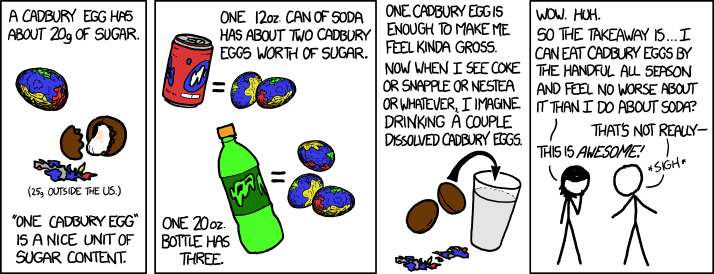Here's are two nice Coke Zero geysers done with bumpy Nerd jelly beans.
Why do the bumpy Nerds create such a good geyser? My guess is that it's because they have a lot of extra surface area, because all those bumps stick out so much. That gives the soda bubbles even more space on which to form, and so the bubbles can form quickly.
So how do the bumpy Nerds compare to Mentos, geyser-wise? I tested Mentos, using the same amount of weight as I had with bumpy Nerds (10 g). Here was the result:
I had such high hopes, but the Mentos still won. This time.
By the way, when I used this experiment today I tried out the Steve Spangler Mentos Geyser Tube. (Steve Spangler is the person who popularized the Mentos/Diet Coke experiment in this video.) The tube works quite well, sending a fountain much higher than if you drop the Mentos in from a cardboard tube, and you're also far away from the mess so you're not nearly as likely to get Coke all over your clothes. Of course, there were drawbacks as well--once I forgot to screw the top on tightly, and the exploding soda pushed the tube right off of the bottle. Another time the bottle fell over when I pulled the trigger string (though this may be because I had to replace the pin, which I lost, with a nail which worked great except when it didn't). So, if you use the Steve Spangler tube, use it right and don't lose the pieces!








